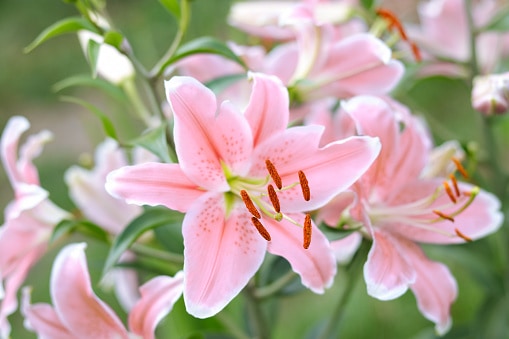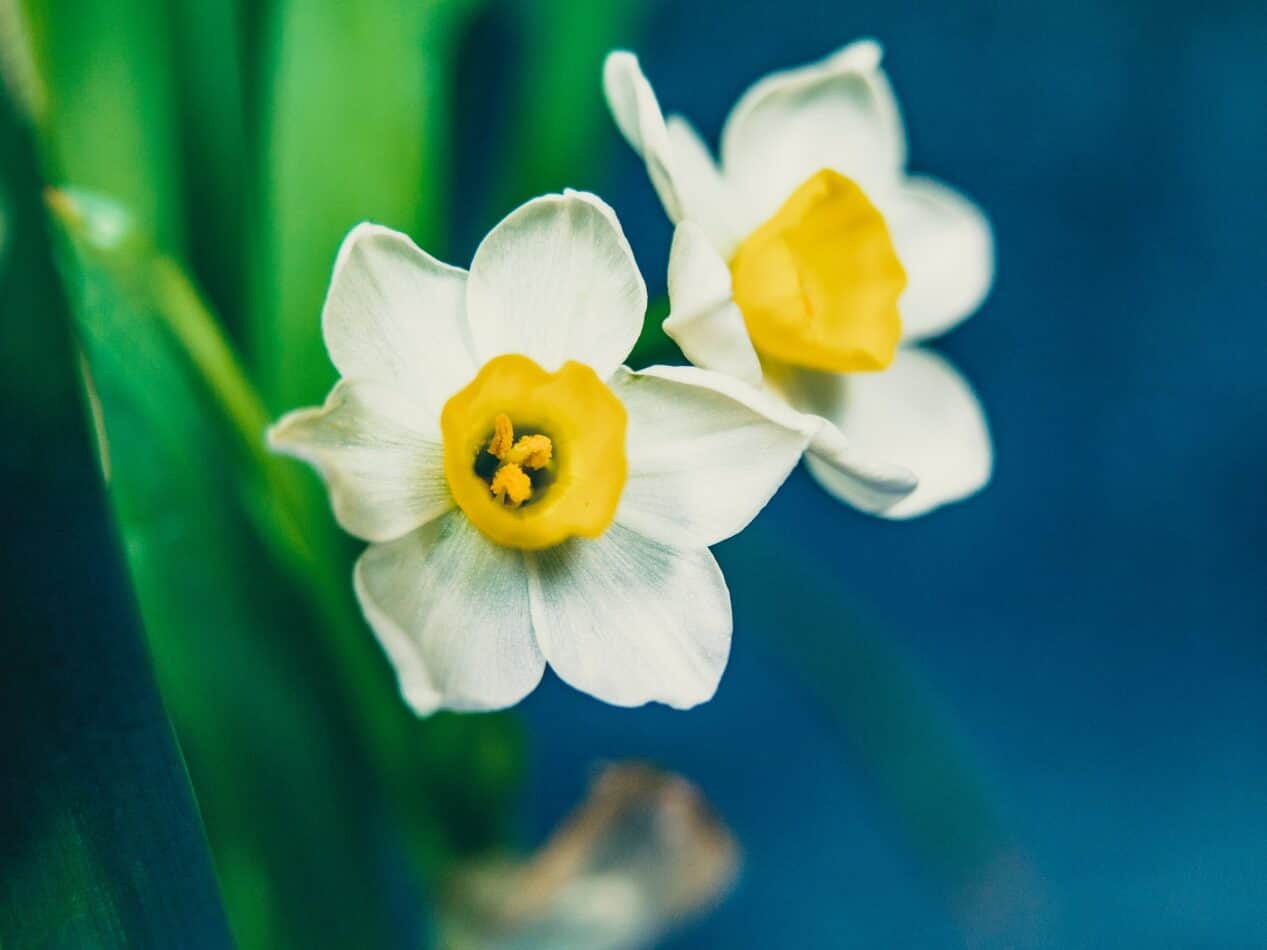The Oriental Lily, also known as Lilium orientalis, is a type of flower belonging to the Liliaceae family, and is an herbaceous perennial. Its scientific name “Orientalis,” comes from the Latin word meaning “rising of the sun,” in reference to the flower’s yellow color and eastern origins. The Oriental Lily is a stunning plant that has captivated gardeners and flower enthusiasts alike.
How to Plant and Grow Oriental Lily
Oriental Lily prefers full sun, but may tolerate light or dappled shade. The ideal soil should be well draining and contain a moderate amount of organic matter. The plant prefers an acidic to neutral soil pH, between 6.0-7.0. It should be watered during the growing season, at a rate of 1-2 inches of water per week. Though frost tolerant, the flower will benefit from an evenly cool temperature, between 55-75°F (13-24°C). The plant does not need to be fertilized; excessive fertilizer can leave the soil too hard for the roots to penetrate.
Meaning and Symbolism
The Oriental Lily is known for its beauty, strong fragrance, and its abundance of yellow, white, and pink flowers. The flower has many meanings, such as beauty, sweetness, purity, and prosperity. In China and Japan, lilies are widely used in weddings, to represent a lasting union. For many, the flower can be a symbol of sorrow and grief, in reference to the Greek myth of Niobe, who grieved the death of her children and was turned into a lily. The plant was also said to have been able to diminish the tears of the gods in ancient Greek mythology. In general, the flower has been said to represent divine femininity, motherhood, and virtue. Going back to its scientific name, “Orientalis” the flower is also a symbol of the dawn, or a new beginning.
History, Mythology, and Religious Significance
Lilies have been an important part of both world mythology and religious practices for centuries. In ancient Greek and Roman mythology, lilies are found in the stories of Annabeth, an ancient flower goddess, and her daughter Belides, the water lily. In Hinduism, the lily is seen as a symbol of infinite beauty and the beauty of creation. In Christianity, the lily is widely associated with the Virgin Mary, and the plant has become a symbol of purity, innocence, and rebirth.
In both cultures, the lily is seen as a symbol of fertility and abundance, and is sometimes depicted in religious art and by gardeners as a way to symbolize the abundance of life. Lilies are often featured in paintings of the Madonna as well as in depictions of the Annunciation.
In addition to its religious associations, the Oriental Lily has been widely used in literature, being referred to as a poetry metaphor for beauty, grace, and innocence. The flower has also been an important element in traditional Chinese and Japanese culture, in which it is often used as an offering to welcome spiritual or physical travelers.
Flower Varieties and their Defining Characteristics
The Oriental Lily comes in many varieties and colors, from white to pink, pale yellow and even bi-colored. Popular varieties include the easily grown ‘Golden Splendor’, ‘Erlicheer’, ‘Donabell’, and ‘Stargazer’. The ‘Golden Splendor’ variety is the easiest to grow, with vibrant blooms that are almost 9 inches in diameter. The ‘Erlicheer’, has creamy white petals and is less fragrant than other varieties. ‘Donabell’ has pink and white, fringed petals and is said to have a sweet and delicate aroma. The ‘Stargazer’ is the most popular of all Oriental Lily varieties, with its sweet smell and dark pink petals.
How to Pot and Repot
When planting the lily, it’s important to start with a large container, about 8 inches in diameter. Make sure to fill the container with potting mix and/or soil. The soil should be well draining and organic. The plant should have at least 8 inches of space between it and the walls of the pot. Water the soil until it is saturated and then, adding the lily tuber. Place the tuber with its base facing down and spread the roots over the surface of the soil. Cover the tuber with the potting mix, making sure not to cover the leaves. Water the soil carefully and place the pot in a bright, sunny place.
How to Prune
Prune your Oriental Lily in the early spring, and prune it again in late summer. Start by removing all the dead, damaged and yellowing leaves. Once the foliage becomes thin and weak, your correctly prune the plant by cutting off all of the foliage, about an inch from the top of the bulb. Pruning isn’t necessary, but it will help in ensuring a healthy and beautiful flower for the coming season.
How to Propagate
Propagate the Oriental Lily by dividing the plants. Dig up the plant from the pot and carefully divide it into pieces, making sure each section contains some roots and leaves. Re-pot the divisions into fresh soil, making sure that the tuber’s base is facing downwards. Water the soil and place the pot in a bright, sunny spot. To ensure good growth, fertilize the plants once or twice a month.
Common Pests and Diseases
Oriental Lily is a hardy plant, but it is not completely free of pests and diseases. Some of the most common pests are aphids, slugs, and snails, while the common diseases include botrytis and fungal diseases. To make sure that your plant is protected, it is important to check the soil regularly for signs of pests and diseases. If you spot any pests or diseases, treat them with the appropriate pesticide or fungicide. Make sure to read the instructions carefully before applying the product to your plant.
Frequently Asked Questions
Q. What color is Lilium orientalis?
A. Lilium orientalis is predominantly yellow, white, and pink.
Q. Does Lilium orientalis have any symbolic meaning?
A. Lilium orientalis has many different meanings, including beauty, sweetness, purity, prosperity, divinity, motherhood, and virtue. It is also symbolic of the dawn or a new beginning.
Q. When is the optimal time to plant Lilium orientalis?
A. Plant Lilium orientalis in the early spring and make sure there is enough organic material in the soil.
Fact Sheet
| Oriental Lily | Lilium Orientalis |
|---|---|
| Family | Liliaceae |
| Plant Type | Herbaceous Perennial |
| Mature Size | 2-4 ft. |
| Sun Exposure | Full Sun |
| Soil Type | Well Draining |
| Soil pH | 6.0-7.0 |
| Bloom Time | Mid-late Summer |
| Flower Color | White, Pink, Yellow |
| Hardiness Zones | 4-8 |
| Native Area | Asia |
What we love from Amazon this week
Buy these wonderful flowers directly from Amazon:















